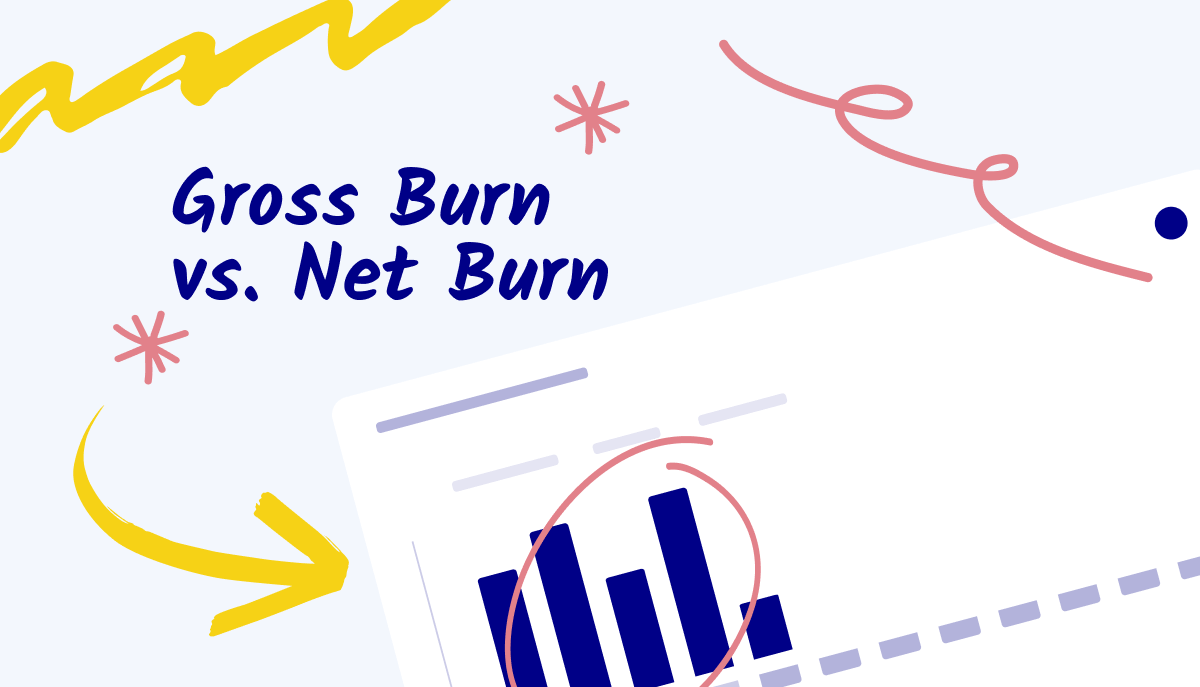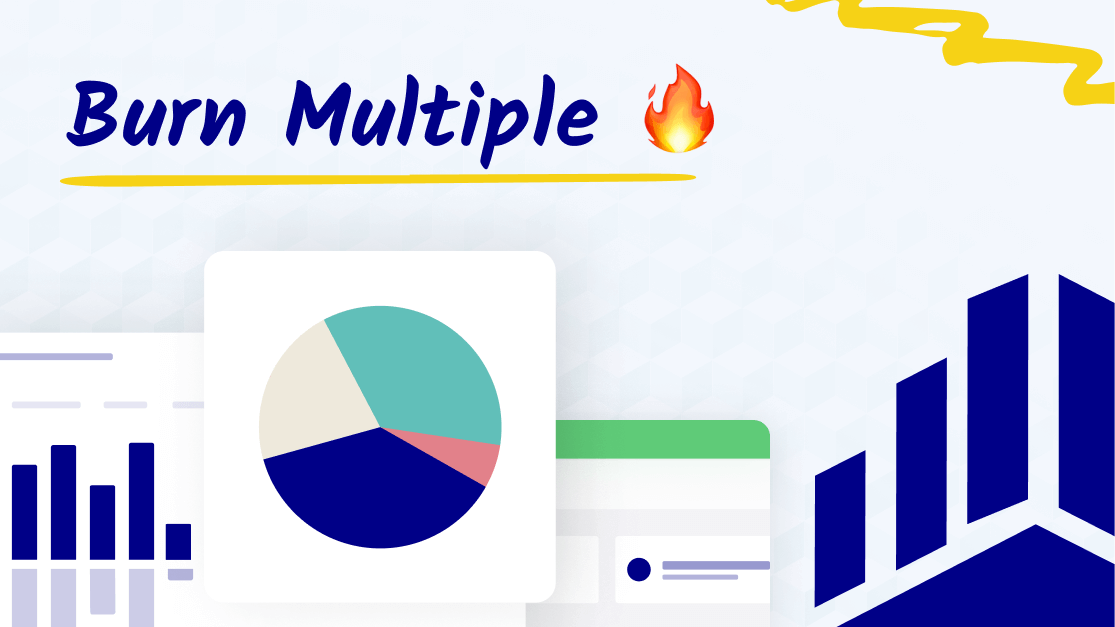How to use burn rates
Companies use burn rates to make strategic decisions regarding the future state of the business. Evaluating burn rates helps organizations understand their overall financial performance and what the outlook is for each upcoming period.
It also helps determine a company’s runway, the amount of time the company can continue on its set path of spending and income before funds deplete entirely.
Companies look to their runway and burn rates to decide what changes are necessary in the business strategy in order to keep the doors open. For example, if an organization shows that, without any change, they will run out of funds in six months, the company can react and make appropriate changes.
This could mean putting off unnecessary expenses or rebalancing funds to allow for more aggressive and targeting marketing strategies in attempts to grow revenue.

Calculating burn rates and runway
Net or gross burn rate: which is better?
Each metric can provide valuable insight into the future state of a business, but which is better? Should companies focus on gross burn or net burn? It’s best to evaluate both.
Gross burn
Gross burn provides the entire picture for organizational spending. It equals the entire amount of cash that is outgoing in a given period. This is a great metric to use when trying to understand the total expense that is incurred by the business and how much cash is required to keep the doors open if the company loses every revenue source.
Gross burn is useful because it’s more predictable in that it doesn’t fluctuate based on factors other than how much the company spends.
Net burn
On the other hand, the net burn rate can vary based on revenue and collections each period since it takes incoming cash into consideration. Organizations need to use caution when evaluating this metric, as favorable months can greatly skew the result.
The net burn will appear more favorable if incoming cash spikes are based on positive revenue or collections figures. However, it may be best not to live and breathe by that figure if it isn’t likely to be sustainable.
Example: ice-cold burn
Consider a seasonal business, such as an ice cream parlor in a tourist town. Each month, whether in the busy season or slow season, the parlor incurs fixed expenses to keep the doors open, like building costs, website expenses, and utilities.
They purchase ice cream more frequently and likely hire additional staff to help serve customers. However, the additional revenue likely outshines the added expenses.
The gross burn rate for this ice cream parlor is likely to be lower in the offseason because the business isn’t spending as much on supplies or staff. However, the gross burn will increase rapidly once the busier season hits and expenses grow. This is where the net burn rate can provide better insight.
However, since the net burn rate will likely look favorable during the busy season, it can instill a false sense of security. The business may be tempted to act based on that number and spend a higher amount of cash.
Objectively speaking, that may not be a great business decision as their cash is projected to decrease once the peak season fades. Companies should take both net and burn into consideration when understanding their overall strategy.
Improving the burn rate
Keeping the burn rates in check can help ensure the business continues operating for years. What happens when the burn rate isn’t quite where the company would like it to be? Consider the following ways to get it back on track:
- Cut expenses. Improving the burn rate comes down to making sure expenses stay lower than revenue. Review outgoing cash to find unnecessary costs that are eating up cash and not adding significant value to the organization. Consider eliminating unused subscriptions or services that can easily be done in-house to conserve funds.
- Avoid overspending during high revenue months. When revenue increases for a few months, the net burn rate can improve significantly and tempt businesses to spend more cash. Instead, businesses should try not to overspend in favorable months & aim to conserve cash for when revenue dips.
- Ramp up advertising efforts. Evaluate the budget and determine what could be adjusted to accommodate extra marketing and advertising strategies. Assess which tactics work well for your company or industry and decide to increase them in hopes of bringing in additional revenue.
- Analyze trends. Don’t get stuck on these metrics on a month-by-month basis. Instead, take an analytical approach to determine how the burn rates ebb and flow throughout the year. Take note of any patterns so the business can be financially prepared for whatever the future is likely to hold.
Conclusion: feel the burn
Don’t fear the burn – embrace it! Both net and gross burn rates help businesses stay on track and prepare for their financial future.
Using these metrics, a company can easily determine how long it can keep up with its current spending behavior before funds dry up.
Feeling the burn? Take steps to improve the metric and keep the company moving in the right direction.



.png)









.png)




.png)
